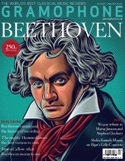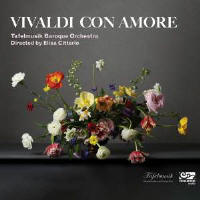Texte paru dans: / Appeared in: |
|
|
Outil de traduction (Très approximatif) |
|
|
Reviewer: Charlotte Gardner Beyond reissues, the Canadian period-instrument orchestra Tafelmusik have been conspicuously quiet in the recordings domain in recent years, despite having been downright prolific and indeed highly acclaimed during the 1990s and early 2000s. However, here they are now with their first new recording since the violinist Elisa Citterio took over as music director in 2017: eight Vivaldi works, featuring just their 17 permanent players, which in the context of their last major recording project having been a Beethoven cycle feels like a conscious return to their Baroque roots. It’s a strong return, too. In general terms, the tempos all feel right, faster movements sounding upbeat but never breakneck, and slower movements given space to breathe but not enough to drag. Metrically, meanwhile, it’s precise but also far from rigid-sounding, thanks to sensitively shaped and coloured phrases and inventive ornamentation. Then there’s the determined beauty to their sweetly rich, gently vibrating sound – where some bands will make a feature of their period instruments’ slightly less couth tonal tendencies, this lot definitely prefer polish, and all the previously described precision and poetry comes wonderfully together for the opening nine bars of RV553 for four violins, where the solo quartet’s triplet figures are superlatively fused together and exact, while also sounding as close to the natural chirruping of birds as I’ve yet heard them played. The central slow movement of the D major Lute Concerto is also worth a mention. First because of soloist Lucas Harris’s ornamentation: holding back initially, but on the repeats making it sumptuously ear-catching and amorous. Then also because of the light-textured, less-is-more poise of the accompanying texture: an interesting point of comparison here is the voluptuously soft, warm and rubato’d reading newly out from Thomas Dunford and his ensemble Jupiter …, a sound world which in Baroque ceiling terms would represent soft-focus cherubs peeking from luxuriously spread clouds, against Tafelmusik’s equally ornate but more crisply ordered gilt border. As for which I prefer, I honestly couldn’t say. The orchestra’s woodwind equally get ample chance to show their many colours, with fine performances from the bassoonist Dominic Teresi in his RV481 concerto in D minor and oboists John Abberger and Marco Cera in their own two double oboe concertos. All in all, this is an attention-grabbing return to the recording studio. |
|




